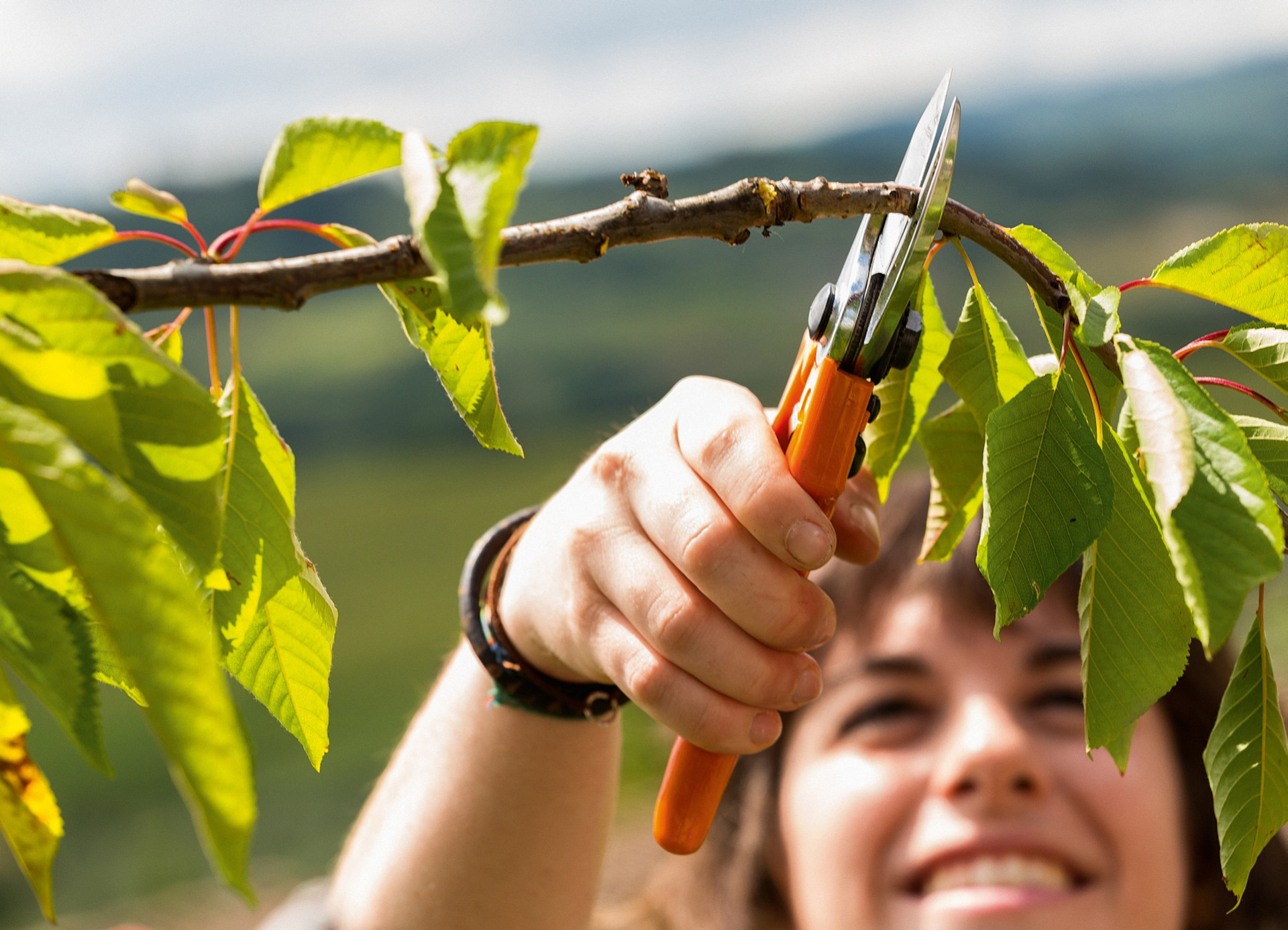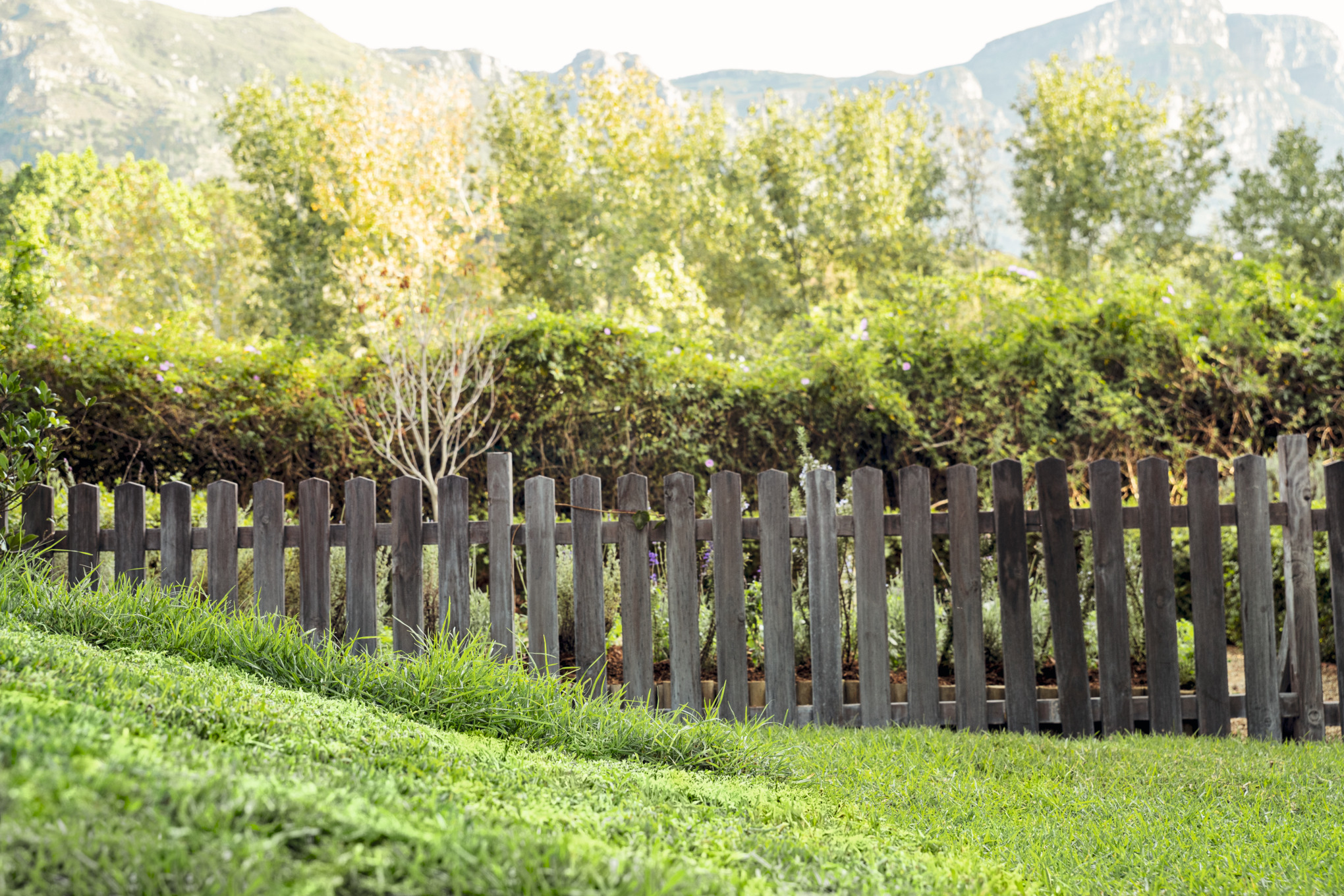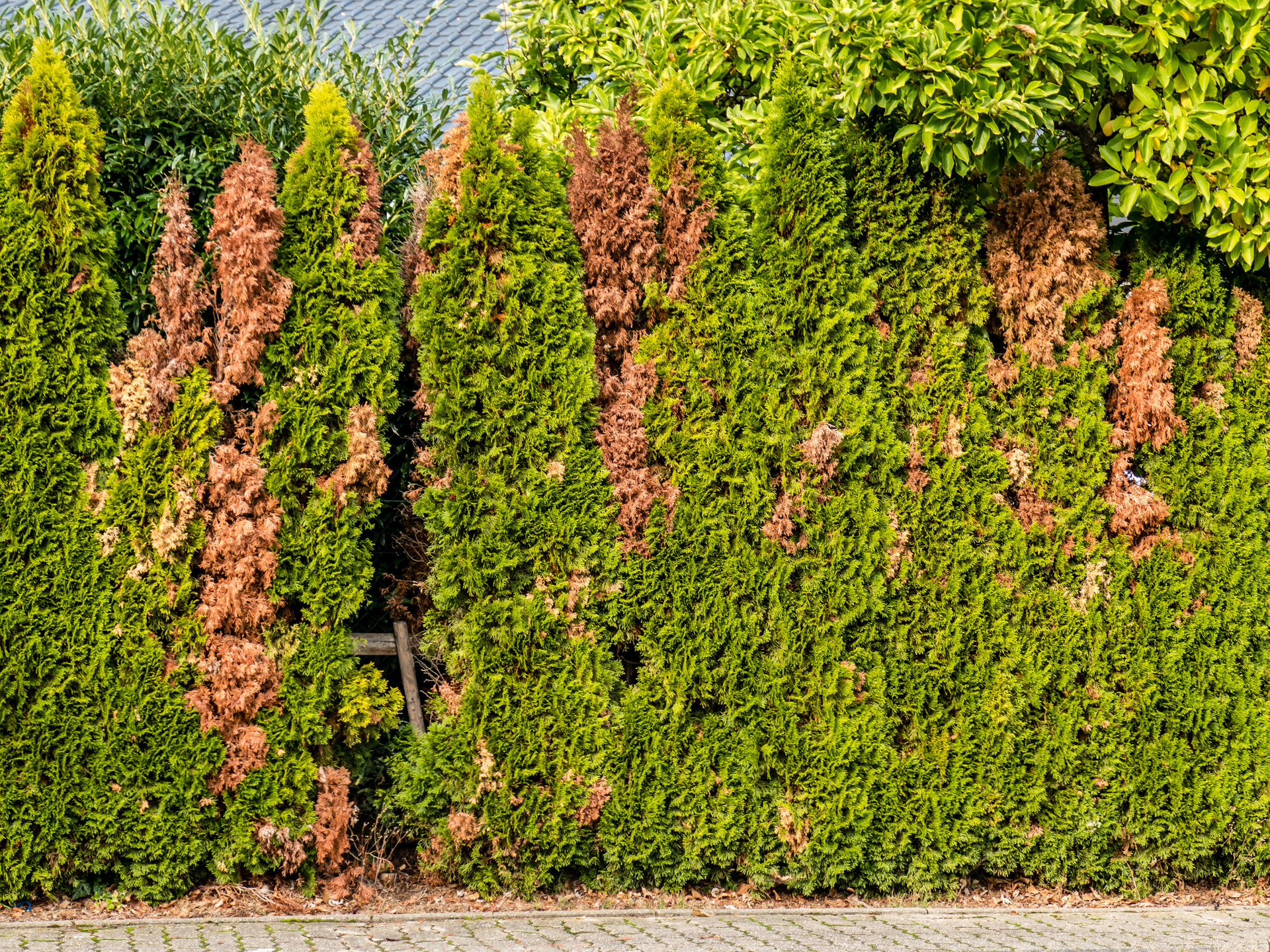LAWN REPAIR AND CARE: HOW TO REVIVE DEAD GRASS
Lawn not looking its best? You can fix that! Find out how to repair dead grass and how to fix dead patches of grass in your garden!
23.10.2025

Lawn patch repair: Why has my lawn got damaged?
Grass discoloration, bare lawn areas and unexplained holes in the ground are not just a source of annoyance for garden owners, but also an indication of something you should be aware of: a deficiency or an unwelcome visitor of some kind. As all plants are, grass is vulnerable to external influences, and these can manifest as visible changes which you need to take steps to repair. Fortunately, in many cases it is quite straightforward to remedy and revive your lawn.
We recommend you act promptly when it comes to lawn repair, as it is not simply a matter of aesthetics: untreated patches of dead grass and holes represent points of weakness in your lawn in which weeds will be more than happy to establish themselves. Given the chance to do so, you will have a much larger lawn care job on your hands, and the repair is likely to take much longer.
Before you can start to actually repair your lawn, you need to establish the cause and extent of the damage. Are large areas affected or do you only need to repair small patches of lawn? Has it been maintained incorrectly? Or has the damage been caused by animals, diseases or waterlogging? The more thoroughly you investigate, the easier it will be to identify a long-term solution.
Lawn patch repair: How to revive dead grass

Have you noticed bare patches that you need to repair? These can be caused by different things:
- Dead or damaged patches and imprints caused by garden furniture, trampolines, paddling pools or planters. This is a common problem during the summer months, when lawns are heavily used for playing on or for barbecues.
- Deficiencies in your soil
- Insufficient or excessive maintenance
- Uneven distribution of seed during sowing
Overseeding bare patches
It’s generally easy to repair a lawn with bare patches: just sow new grass in the affected areas. The best time to do this is in April or September, when the ground will no longer be exposed to frost or hot sun; the soil temperature needs to be at a little over 10° Celsius to ensure uniform germination.
When reseeding, it is best to use the same grass seed mix as was originally used for the lawn. If you don’t have it anymore, choose a similar variety that will match the color of the rest of the lawn.
Step 1: mow your lawn
Mow the remaining grass as short as possible. You can find out more about the right way to mow your lawn in our guide.
Step 2: clear dead patches
Loosen the surface in smaller affected patches using a rake, and remove any weeds, moss, dead grass and dead plant matter. This will open up the surface, making it easier for air, water and micronutrients to get underground and nourish the grass as it grows. It also ensures that the grass seeds have good contact with soil later on.
Improve soil quality if needed
If the earth is too heavy or too light, the growth of the grass will be impeded. Clay-heavy soil is often very compacted and holds too much water, but it can be improved by adding silica sand. If necessary (e.g. if there is matted grass), scarify the lawn and scatter silica sand over the area. When it rains, the sand will be pushed into the earth and loosen it.
Sandy ground can be improved by adding compost or finely ground clay. If you are unsure of conditions in your garden, a soil analysis can help; this service is available from specialist institutions and laboratories.
Step 3: scatter seed
With the ground prepared, you can now continue your repair work by scattering the grass seed evenly throughout the damaged patches. You can do this by hand, though if you have more extensive areas of bare earth you may prefer to use a spreader. Finally, push the seed down into the soil using a board or roller. An alternative approach is to mix the grass seed with potting compost before sowing, so it already has soil contact when you scatter it. Cover the prepared areas of soil with the potting compost and seed mix and use a broom to spread it evenly.
Step 4: water and feed
Water the sown areas with as gentle a stream of water as possible (use a spray nozzle), so that you do not wash them from the surface of the earth. If necessary, cover the patches you have repaired with a thin layer of potting compost or similar.
Now all you need to do is wait and keep the soil moist. Avoid walking on the newly sown areas for the next few weeks.

Rolled turf as an alternative method of repair
Wondering how to revive dead grass quickly? A faster way to repair bare patches of lawn is with rolled turf. This is cultivated grass which is cut, then rolled up like a rug for delivery to you. It simply needs to be unrolled onto level, bare earth and kept moist, and it will quickly establish in your lawn. This is an attractive alternative for anyone who wants to be able to quickly make full use of their lawn again. It is a significantly more expensive repair option than reseeding.
Divots and holes in the lawn
Holes in the lawn are often an indication of visiting animals. They may dig up the garden as they hunt for food, destroying your beautiful, level lawn and leaving unsightly trip hazards behind. Before you fill in the holes and repair the grass, you may wish to identify your uninvited guests by using a wildlife camera or simply by keeping a close watch on your garden.
Animals that may cause lawn damage
Every animal has a distinctive way of burrowing: hedgehogs leave shallow, funnel-shaped holes, while moles make underground tunnels and leave behind mounds of earth. Gnawed roots in small, irregular holes are a typical sign of voles. Wasps, ants and earthworms leave tiny holes that don’t affect the grass – while squirrels do not burrow, but may scratch at the earth to bury the nuts they find.
Many wild animals visit our gardens for simple reasons of survival. With once-common visitors such as hedgehogs and stag beetles in decline in the UK, there are good reasons to make your garden animal-friendly and create refuge spaces and habitats for them.
How to repair holes in the surface of the lawn
To fill shallow depressions, all you need is a thin layer of sand, while deeper holes can be filled with potting compost. Tramp down the surface with your feet.
Next, revive your lawn by repairing the patches of bare grass by reseeding or using a piece of rolled turf.

How to fix dead grass: other problems and causes
Weeds, waterlogging and scorched grass are all signs that your lawn needs specific extra attention. We have outlined other lawn damage problems and how you can repair them.

There can be many reasons for weeds to spring up in your lawn. A lack of water or nutrients can promote the growth of clover, dandelions and daisies in your lawn, because undernourished grass is unable to fight the spread of weeds. Cutting the grass too short and using low-quality grass seed also contribute to the problem.
Solution: You can tackle weeds by first cutting your grass to a height of about 2 centimeters and then scarifying it. Sufficient, regular feeding of your lawn will help prevent future outbreaks.
If puddles form on the surface of your lawn even during light rain, this may be due to over-compacted areas of earth. Roots, stones and clay soil make it difficult for water to drain away, causing waterlogging which will suffocate your grass.
Solution: Regular scarifying and sanding improve soil quality.
Heat, direct sun and dry weather are bad for your lawn. Summer mowing when the sun is at its strongest, in the middle of the day, does your grass no favors: the freshly cut blades are sensitive, and strong sunlight will immediately scorch them. However, using too much fertilizer – or the wrong kind – can also cause scorching that you will need to repair.
Solution: In hot conditions, be sure to water your grass enough, either early in the morning or after sunset. Proper lawn care, including scarifying for example, will aerate it, and regular fertilization will ensure that it gets enough nutrients for healthy growth. To repair scorched grass and soil, you need to remove and replace them.
Constant shade will prevent your lawn from getting sufficient sunlight, rendering it weak and unable to grow. If the shade is being cast by a tree, its crown will also block much of the rain that your grass depends on.
Solution: Lawn seed mixes for shade have been developed for semi-shaded areas and can also be used, with a lot of care, in fully shaded areas. These varieties can grow lush and green in spite of a lack of light. If the area is in constant shade though, we recommend you consider a suitable shade-tolerant ground cover as an alternative to grass, such as hazelwort or ajuga.
Good for beds, bad for the grass: even a light, picturesque carpet of crisp leaves over your lawn can actually damage it when the first rain or snow falls. Damp leaves and pine needles cling together, forming a thick layer that prevents air from reaching the grass and causes it to rot.
Solution: Keep your lawn clear of leaves. Use a leaf blower to get the job done in seconds.
Summary: hOW TO REPAIR LAWN
- Soil condition, improper care, garden furniture and other objects can all cause bare patches in your lawn
- You can repair any gaps or holes in your lawn by reseeding
- The best time to reseed a lawn is in April or September, when the soil is no longer exposed to the stresses of frost or hot weather
- Divots and holes in the lawn are usually created by animals. You can use a wildlife camera or investigate the specific damage to identify your uninvited guest
- Weeds, yellowing and scorched grass are indications of improper lawn care. You can prevent lawn damage from shade by selecting a shade-resistant variety of grass or by opting for an alternative ground cover
- You should not allow leaves to collect on your lawn, as they can cause the grass to rot


